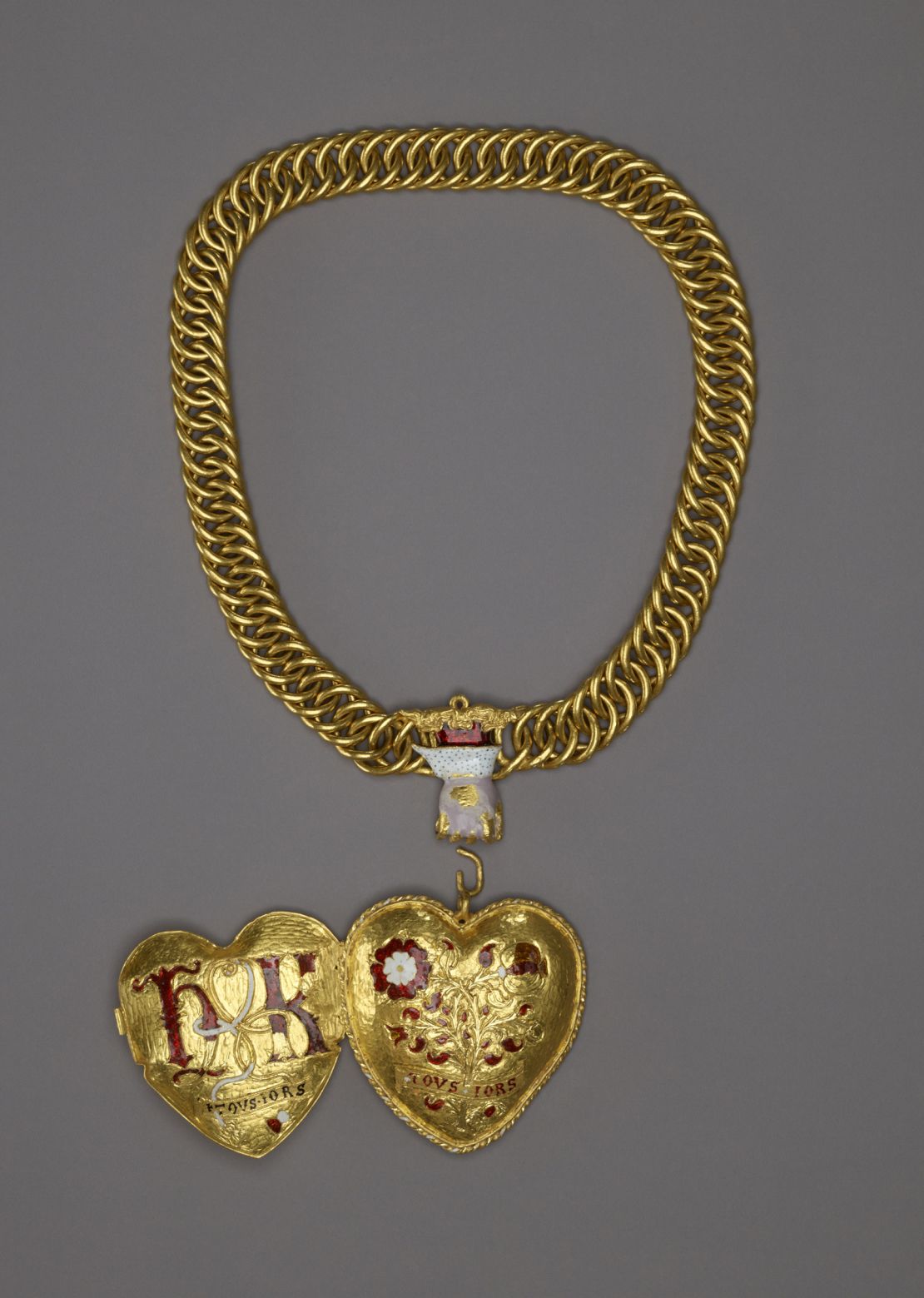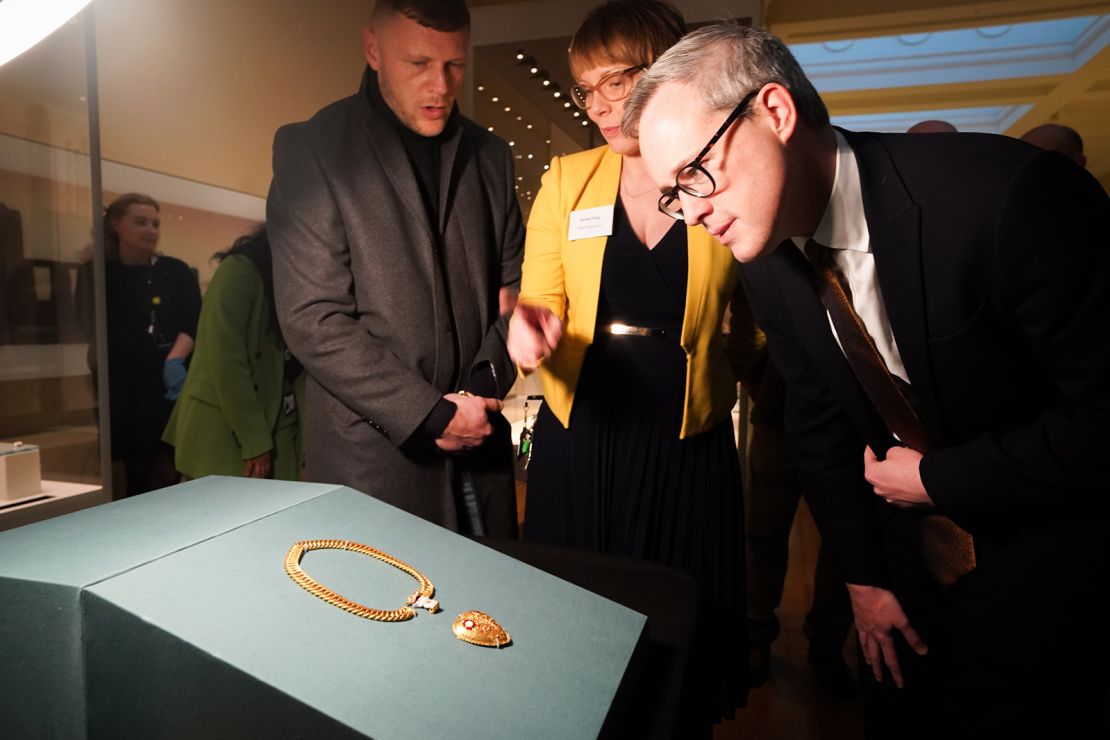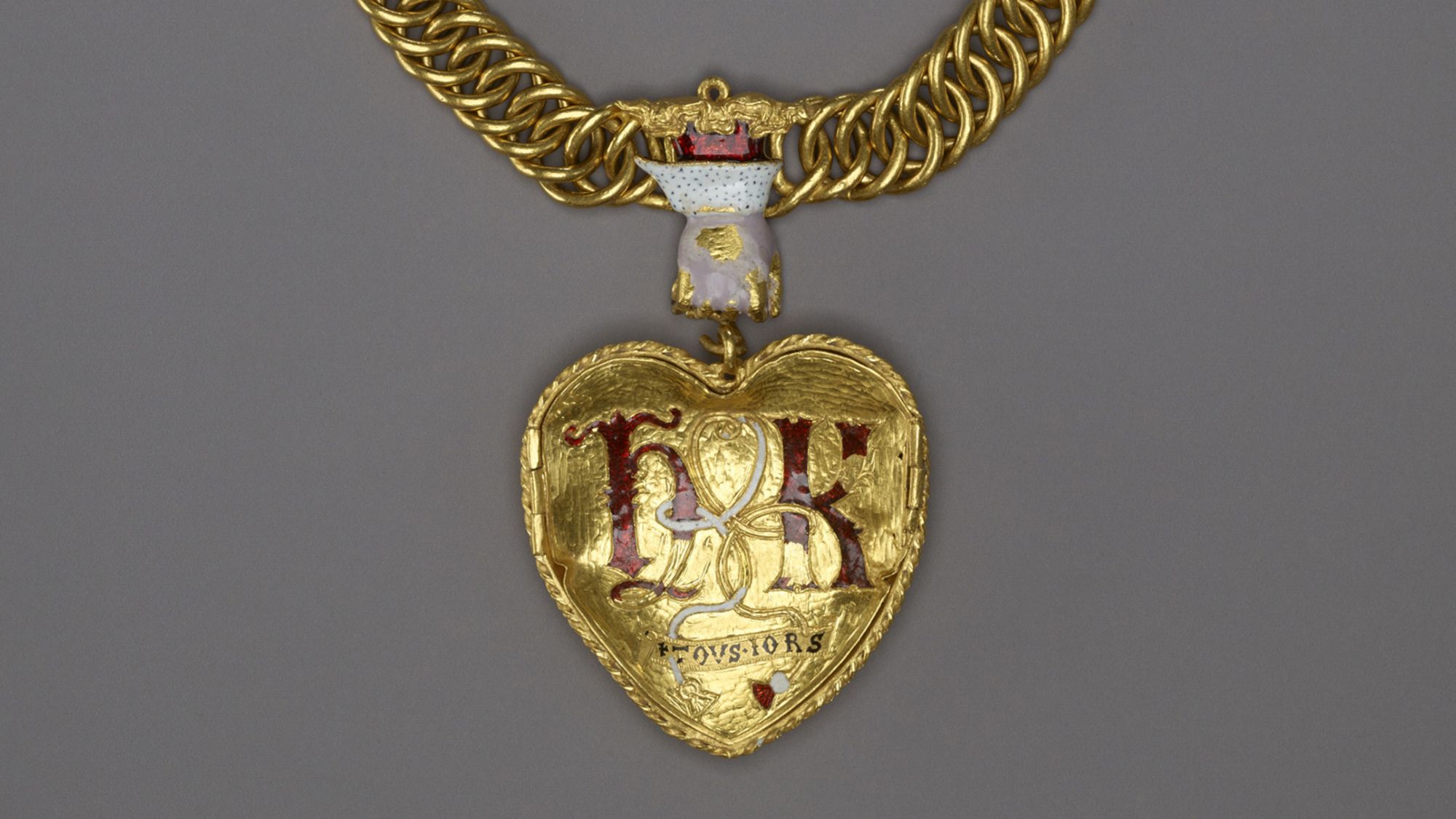It was a find of such magnitude that the amateur detectorist who discovered it was lost for words, and the expert who unraveled its mysteries spent two years researching it.
Charlie Clarke had only been metal detecting for six months when, in 2019, he unearthed a gold pendant in Warwickshire, in England’s West Midlands region.
The pendant featured the symbols of Tudor King Henry VIII and his first wife Katherine of Aragon, on a chain composed of 75 links, attached by an enameled suspension link in the form of a hand. The first of Henry VIII’s six wives, Katherine married Henry in 1509.
“It was just outstanding,” Clarke told CNN Wednesday. “Nobody thinks you’re ever going to pull out that, in my lifetime especially – I can imagine in 30 lifetimes.”
Weighing 300 grams (10.6 ounces), the pendant itself is heart-shaped. One side is decorated with a Tudor rose entwined with a pomegranate bush growing from the same branch. The reverse shows the letters H and K – for Henry and Katherine – linked together. Both sides are inscribed with writing TOVS + IORS underneath, a pun on the French word “toujours” meaning “always.”

Still new to the world of metal detecting, Clarke consulted an expert at Regton, a shop in Birmingham, and contacted the British Museum as well as the coroner to notify them of what he had found.
When she was first told about “the once in a generation find,” Rachel King, curator of Renaissance Europe at the British Museum, had to sit down, she told CNN Wednesday.
“What is this? Is this for real?” she recalls thinking at the time. “And it was such a challenge to me in the sense that could this be 19th century, could it be just costume jewelery?”
Once the pendant had been handed in, the British Museum carried out scientific analysis to determine whether it was indeed a Tudor pendant or merely costume jewelery.
One of these tests – King doesn’t offer more detail to avoid giving information that could allow people to create fraudulent objects – dated the object to before 1530.

After realizing that the same motif was present on other objects and that some parts of the pendant seemed to have been made rapidly, King and her team hypothesized that it might have been used as a prize or worn as part of a costume during a tournament or joust that Henry was so fond of hosting, rather than for the King or his wife.
“This object has just come out of the ground almost as if it dropped out of the sky,” King said. “We’ve got an opportunity to study an object that hasn’t been subject to all of these sorting processes that people have historically taken …. we’re getting something that is in a sense raw information.”
For Clarke, the pendant could be life-changing when it is sold – he said that he hopes to use the money for his 4-year-old son’s education.
“People say it’s like winning the lottery but people win the lottery, people don’t find the crown jewels, do they?” he said.
The find was announced by the British Museum as part of the launch for the Treasure Annual Report for 2020 and the Portable Antiquities Scheme Annual Report for 2021. These show that 45,581 archaeological finds – including more than 1,000 treasure cases – were recorded in 2021, 96% of which had been found by people metal-detecting.
